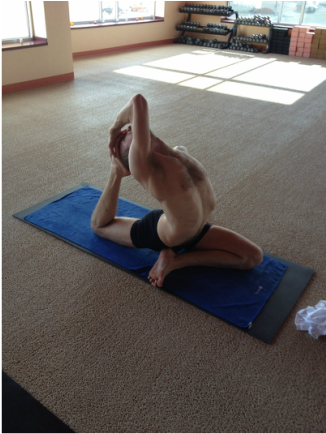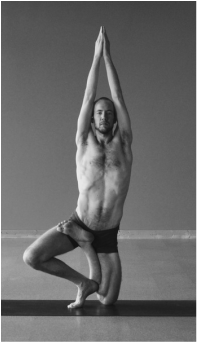|
When practicing stretching postures including backbends, it is easy to make the pose just about the bend, the stretch. In backbends especially, it is easy to get caught up in how deeply my spine is bending. But there are other, more fundamental, elements of backbends that facilitate a deeper bend.
For example, in the One-Legged Pigeon backbend (pictured above right), it is easy to think that the posture is just getting your head onto your foot, which I suppose it is at some level. Backbending takes a lot of strength in the muscles of the back and shoulders. The back must be strong enough to pull the spine into a reverse bend, especially in the thoracic (middle) section. And the front must be open enough to allow the body to move in this direction. In preparation for the One-Legged Pigeon backbend, to strengthen the back muscles, I use only strength to pull my body upright and backward, not relying on the grip between the foot and the hand. I also stretch my arms up and back, relying on shoulder strength. This is very challenging, even moreso without interlacing the fingers. By combining these two actions - stretching up with the arms and pulling back with the back muscles (pictured above left) - I am working into the backbend using my own strength and not just the leverage of hand pulling foot. I build strength and awareness of the necessary muscles in this position, making the ultimate stretch a lot deeper and more satisfying when I release into it.
0 Comments
Leave a Reply. |
This journal honors my ongoing experience with the practice, study and teaching of yoga.
My FavoritesPopular Posts1) Sridaiva Yoga: Good Intention But Imbalanced
2) Understanding Chair Posture 2) Why I Don't Use Sanskrit or Say Namaste 3) The Meaningless Drudgery of Physical Yoga 5) Beyond Bikram: Why This Is a Great Time For Ghosh Yoga Categories
All
Archives
November 2017
|




 RSS Feed
RSS Feed